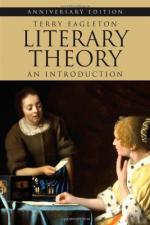
|
| Name: _________________________ | Period: ___________________ |
This quiz consists of 5 multiple choice and 5 short answer questions through Chapter 3, Structuralism and Semiotics.
Multiple Choice Questions
1. According to Eagleton, what kind of age do we live in, where "meaning, like everything else, is expected to be instantly consumable"?
(a) Traditional.
(b) Modern.
(c) Postmodern.
(d) Esoteric.
2. According to the Russian critic Roman Jakobson, literature represents "organized ______committed on ordinary _______."
(a) Violence; people.
(b) Religion; writing.
(c) Violence; speech.
(d) Protest; speech.
3. According to Eagleton, William Empson "insists on treating poetry as a species of ______language."
(a) Spectacular.
(b) Secular.
(c) Religious.
(d) Ordinary.
4. What is the German word for how reality is not objective, but experienced and organized by an individual subject?
(a) Bildungsroman.
(b) Wendepunkt.
(c) Lebenswelt.
(d) Vorgeschichte.
5. According to Eagleton, "In the late sixteenth and early seventeenth centuries, the word ______seems to have been used about true and fictional events."
(a) Theory.
(b) News.
(c) Memoir.
(d) Novel.
Short Answer Questions
1. According to Eagleton, as the first industrialist capitalist nation, England becomes what kind of state?
2. According to Eagleton, why did the Russian formalists NOT see a literary work as a vehicle for ideas, reflection of reality, or transcendental truth?
3. What are Northrop Frye's three recurrent patterns of symbolism in literature?
4. Who developed hermeneutics?
5. According to Eagleton, eighteenth-century literature embodied more than social values, it also was an instrument for what?
|
This section contains 271 words (approx. 1 page at 300 words per page) |

|




